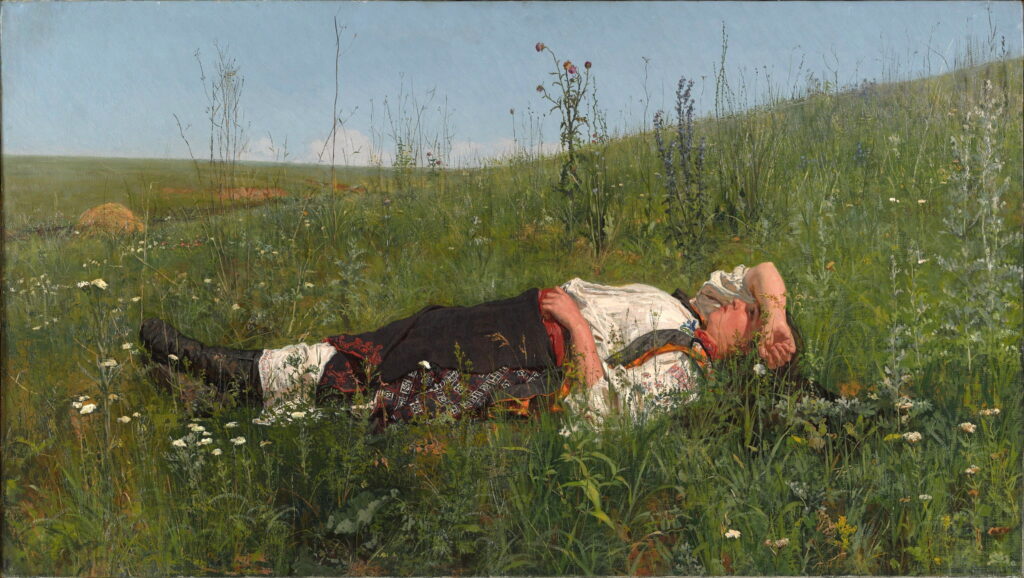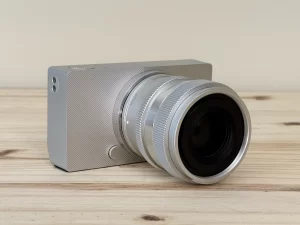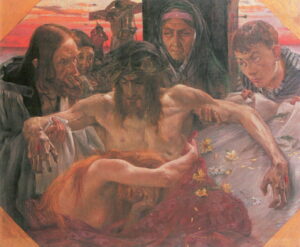Paintings from Ukraine 1

For once, words fail me. So instead of fumbling around trying to express my feelings, this weekend I’m going to let the artists and paintings of Ukraine tell their own story. Each of the links given takes you back to the series of articles I compiled here a couple of years ago.
I start this sketchy account of modern painting in Ukraine in the early nineteenth century, a time of transition from a past of mainly religious works, with workshops creating magnificent icons, to landscapes and secular figurative art. Much of central and eastern Ukraine was then part of the Russian Empire, although in western areas like Galicia and the Carpathians, Polish and Austrian affiliations remained dominant.
When academies had replaced apprenticeship and guilds, the training of painters had become centralised across Europe. The Academy of Fine Arts in Vienna originated as a private academy in 1688, and in 1757 the Imperial Academy of Arts in Saint Petersburg was founded. When Ivan Soshenko and his protégé Taras Shevchenko trained, it was reasonable that they should do so at the Imperial Academy, just as contemporary artists in Galicia aspired to train in Poland or Austria.
Ivan Maksymovych Soshenko (1807-1876). Selling Hay by the Dnieper (date not known), media and dimensions not known, National Art Museum of Ukraine Національний художній музей України, Kyiv, Ukraine. Wikimedia Commons.
Ivan Soshenko (1807-1876) was born in Bohuslav near Kyiv. After his training in Russia, he returned to Ukraine to paint and teach, and it was from there that he encouraged and assisted the training of Taras Shevchenko.
Taras Shevchenko (1814–1861), Maria (1840), watercolour on paper, dimensions not known, National Museum Тaras Shevchenko Національний музей Тараса Шевченка, Kyiv, Ukraine. Wikimedia Commons.
Taras Shevchenko (1814–1861), Gypsy Fortune-Teller (1841), watercolour on Bristol paper, 26.5 x 20.7 cm, National Museum Тaras Shevchenko Національний музей Тараса Шевченка, Kyiv, Ukraine. Wikimedia Commons.
Taras Shevchenko (1814–1861), Kateryna (1842), oil on canvas, 93 x 72.3 cm, National Museum Тaras Shevchenko Національний музей Тараса Шевченка, Kyiv, Ukraine. Wikimedia Commons.
Taras Shevchenko (1814-1861), widely known as Kobzar Taras, was born in Moryntsi, central Ukraine, near Kyiv. He was a protégé of Ivan Soshenko, and became a prodigious painter and prolific writer, the founder of modern Ukrainian literature.
Russia was relatively slow in opening up its collections of art to the public. Those of the Medici family in Florence had been opened to the public as the Uffizi Gallery around 1789, and the French royal collection became the Louvre Museum shortly after, in 1793; even London’s National Gallery was founded in 1824. Russia’s earliest public collection, also located in Saint Petersburg, wasn’t opened to the public until 1852, and the next two were even later: the Tretyakov Gallery in Moscow in 1867, and the Aivazovsky National Art Gallery in Feodosia, Ukraine, in 1880.
Arkhyp Kuindzhi (1841–1910), Night (1905-08), oil on canvas, 107 x 169 cm, Russian Museum Государственный Русский музей, Saint Petersburg, Russia. Wikimedia Commons.
Arkhyp Kuindzhi (1841–1910) was born in Mariupol. After had trained at the Imperial Academy in 1868-72, instead of returning to Ukraine to teach he found patrons like Pavel Tretyakov in Moscow, and was appointed professor in Saint Petersburg in 1892. Fortunately he found time to return to Ukraine to paint, and to influence other Ukrainian artists.
The oldest art school in Ukraine, now named the Grekov Odesa Art School, is in Odesa, and was initially founded as a drawing school in 1865. Within twenty years, there were art schools in other major cities including Kyiv, but the attraction of the Imperial Academy remained, together with the pool of wealthy Russian patrons.
Volodymyr Orlovsky (1842–1914), Harvest (1882), oil on canvas, 62 x 100 cm, National Art Museum of Ukraine Національний художній музей України, Kyiv, Ukraine. Wikimedia Commons.
Volodymyr Orlovsky (1842–1914) was born in Kyiv. He started training there under Soshenko before he went to study at the Imperial Academy in 1861-68. Russia retained him there, first by providing him travelling funds to tour Europe, then with the post of professor in 1876. Ten years later he broke free and returned to Kyiv to teach, and co-founded Kyiv Art School in 1900.
Khariton Platonov (1842–1907), Oxana (1888), media and dimensions not known, Ekaterinburg Museum of Fine Arts Екатеринбургский музей изобразительных искусств, Yekaterinburg, Russia. Image by anagoria, via Wikimedia Commons.
Khariton Platonov (1842–1907) was born in the Upper Volga region of Russia. He lived, worked and taught in Kyiv from 1877, and among his pupils there were Mykola Pymonenko and Mykola Burachek.
Mykola Kuznetsov (1850-1929), In Celebration (1879-81), oil on canvas, 55 x 98 cm, Tretyakov Gallery Государственная Третьяковская галерея, Moscow, Russia. Wikimedia Commons.
Mykola Kuznetsov (1850-1929) was born to the north of Odesa. From 1893 he was based mainly in Odesa until he migrated to Yugoslavia in 1920.
Rufin Sudkovsky (1850–1885), Clear Water (1879-85), oil on canvas, 78 x 125 cm, Kyiv National Picture Національний музей «Київська картинна галерея» (Київська національна картинна галерея), Kyiv, Ukraine. Wikimedia Commons.
Rufin Sudkovsky (1850–1885) was born in Ochakiv, between Odesa and Kherson, where he was based for much of his career. He painted the Black Sea coast.
Ivan Pokhitonov (1850–1923), Winter Twilight in Ukraine (c 1895), oil on panel, 24.5 x 36 cm, National Art Museum of Ukraine Національний художній музей України, Kyiv, Ukraine. Wikimedia Commons.
Ivan Pokhitonov (1850–1923) was born in central Ukraine, to the north of Kherson, and trained in Odesa. He travelled in Europe and lived in western Russia and Belgium.
Over this period there were also three famous expatriates: Ivan or Hovhannes Aivazovsky, Ilya Repin, and Marie Bashkirtseff.
Ivan/Hovhannes Aivazovsky (1817–1900), Sunset over Yalta Закат в Ялте (1861), oil on canvas, 67 x 89 cm, Private collection. Wikimedia Commons.
Ivan/Hovhannes Aivazovsky (1817–1900) was born in Feodosia, Crimea. Although he travelled extensively, he was based in Feodosia from 1845. He was a major marine artist, and was appointed official painter to the Russian Navy. He painted Crimea and the Black Sea coast, and his studio taught Arkhyp Kuindzhi.
Ilya Repin (1844–1930), Reply of the Zaporozhian Cossacks (1878-91), oil on canvas, 217 x 361 cm, Russian Museum Государственный Русский музей, Saint Petersburg, Russia. Wikimedia Commons.
Although Ilia Repin (1844–1930) is today known as a Russian master, he was born in Chuhuiv near Kharkiv. He painted extensively in Russia, Ukraine and France, and was one of the major portraitists and figurative painters of the period.
Marie Bashkirtseff (1858–1884), A Meeting (1884), oil on canvas, 193 x 177 cm, Musée d’Orsay, Paris. Wikimedia Commons.
Marie Bashkirtseff (1858–1884) was born in Havrontsi, central Ukraine. She settled in Paris and trained there from 1877, becoming a protégé of Jules Bastien-Lepage, and a Naturalist, before her untimely death.
I have reached a period when more Ukrainian artists were trained in and taught in the early art schools of Ukraine, as they grew and developed over this period. Although most did train in the long-established academies in Saint Petersburg, Poland and Germany, and many spent time in Paris, centres were flourishing in Kyiv, Kharkiv, Odesa and Lviv. Styles that became popular inevitably included Impressionism and Naturalism.
Kyriak Kostandi (1852–1921), Out Into the World (1885), oil on canvas, 80.5 x 62.5 cm, National Art Museum of Ukraine Національний художній музей України, Kyiv, Ukraine. Wikimedia Commons.
Kyriak Kostandi (1852–1921) was born near Odesa, where he trained initially, and returned to teach. He was co-founder of Odesa’s Society of South Russian Artists and remained a central figure there until his death.
Serhii Vasylkivskyi (1854–1917), Poltava (date not known), further details not known. Wikimedia Commons.
Serhii Vasylkivskyi (1854-1917) was born in Izyum, south-east of Kharkiv, and lived most of his life in the city, where he was a key member of artistic circles.
By the turn of the century most major cities in Ukraine were in the process of forming their own public art collections. The National Art Museum of Ukraine (NAMU) in Kyiv was founded in 1899, the same year as the Odesa National Fine Arts Museum. Kharkiv Art Museum followed in 1905, and the Borys Voznytsky Lviv National Art Gallery was formally opened in 1907.
Serhii Svitoslavskyi (1857–1931), Ukrainian Landscape with Windmills (c 1911), media and dimensions not known, Sochi Art Museum, Sochi, Russia. Wikimedia Commons.
Serhii Svitoslavskyi (1857-1931) was born in Kyiv, where he returned and set up his studio. He painted many Ukrainian landscapes, particularly views of the River Dnipro. He was a teacher of plein air painting in Kyiv, and Oleksandr Bohomazov was among his pupils. He was also a key figure in the early years of Kyiv Zoo.
Mykola Samokish (1860–1944), Crimea. Landscape with a Windmill near Yevpatoria (1919), watercolour, pencil, ink, sanguine, charcoal on paper, 29.8 х 46.5 cm, location not known. Wikimedia Commons.
Mykola Samokish (1860–1944) was born in Nizhyn, Ukraine, and brought up near Chernihiv. He travelled widely and painted in Russia and Ukraine, organised an art school in Simferopol, Crimea, and taught in Kharkiv.
Mykhaylo Berkos (1861–1919), Street in Uman (1895), oil on canvas, 89.5 x 132.5 cm, Fine Arts Museum Kharkiv Харківський художній музей, Kharkiv, Ukraine. Image by Leonid Kulikov or Mykhailo Kvitka, via Wikimedia Commons.
Mykhaylo Berkos (1861–1919) was born and initially trained in Odesa, then settled to the north of Kharkiv, where he taught and was a key figure in Kharkiv Art College.
References
Andrey Kurkov and others (2022) Treasures of Ukraine, A Nation’s Cultural Heritage, Thames & Hudson. ISBN 978 0 500 02603 8.
Konstantin Akinsha and others (2022) In the Eye of the Storm, Modernism in Ukraine 1900-1930s, Thames & Hudson. ISBN 978 0 500 29715 5.



